Author: Tian Hui
The responsibility for compensation for accidents involving spontaneous combustion of new energy vehicles has finally been clarified.
On August 4th, the China Insurance Association published a notice on its official website soliciting opinions on the “Special Provisions for Commercial Insurance of New Energy Vehicles for the China Insurance Industry Association (Draft for Comments, 2021 version)”.
Many media outlets cheered: New energy vehicles now have exclusive insurance, and insurance for spontaneous combustion can be paid!
Indeed, the most notable part of the draft for soliciting opinions on exclusive insurance for new energy vehicles is the issue of compensation for spontaneous combustion of new energy vehicles. According to the new draft, insurance companies will provide compensation for natural disasters and accidental fires that cause spontaneous combustion in the future.
Previously, the party responsible for compensation for spontaneous combustion and fires in new energy vehicles was unclear. Faced with this predicament, car owners often had to “make noise to win” and force the car manufacturers to take responsibility. In most cases, the car manufacturers did take responsibility for compensation, but in some cases, they did not, and car owners had to resort to legal proceedings to claim compensation.
In theory, insurance companies should provide compensation, but in practice, we have not found any cases where insurance companies have provided compensation. This is somewhat perplexing: who is responsible for compensation when new energy vehicles suffer spontaneous combustion or fires?
The introduction of exclusive insurance for new energy vehicles has finally provided a clear answer. With regard to the question of who is responsible for compensating owners and those who suffer losses arising from spontaneous combustion and fires in new energy vehicles, it is clearly stipulated in the exclusive insurance provisions for new energy vehicles.
In the draft for soliciting opinions, the coverage of the insurance company is clearly written to include fire and burning in new energy vehicles, regardless of whether the vehicle is in motion, parked, or charging.
At the same time, for accidents unique to new energy vehicles, such as fires during charging or accidental electric shock from private charging piles, insurance companies assume compensation responsibility in the form of additional insurance in this draft for soliciting opinions.
But why did exclusive insurance for new energy vehicles only appear today? There have been numerous reports of new energy vehicles catching fire, are insurance companies being made the fall guy?
The position of new energy vehicles in the national economy far exceeds its actual production value ratio, especially in the minds of central leaders and regulatory authorities. This has forced the insurance association to change its attitude. At the same time, as the quality of new energy vehicles has improved and the probability of spontaneous combustion has decreased, insurance companies are ready to “take social responsibility”.
However, challenges still remain for insurance companies regarding new energy and intelligent vehicles.
Previously, when it came to fire and spontaneous combustion, the car manufacturers would compensate the owners first as a sign of good faith.## Electric Vehicle Observer contacted several owners of new energy vehicles that caught fire, including owners of recalled models and some charging station operators, before obtaining the above information.
Why do car manufacturers become the compensation targets for new energy vehicle spontaneous combustion? Is it because the current insurance clauses do not cover it?
After investigation, it is clear that car insurance can compensate for new energy vehicle spontaneous combustion incidents as long as they fall within the scope of the vehicle damage insurance coverage. Specifically, fires caused by vehicle-related issues recognized in the fire department’s “fire accident identification report” fall within the scope of vehicle damage insurance claims.
Even if we look at the situation before the reform of auto insurance on September 19, 2020, new energy vehicles that have insured against spontaneous combustion accidents can still be compensated if they catch on fire.
So why do car manufacturers compensate for new energy vehicles that catch fire before the insurance company does?
In some special cases, if the owner did not purchase the corresponding insurance, they can only seek compensation from the car manufacturer. But in most cases, car manufacturers are “willing” to compensate for spontaneous combustion incidents based on brand reputation, quality guarantee, and new energy vehicle subsidy policies, among other considerations.
Compensation from a brand reputation and quality guarantee perspective is easy to understand, but subsidies for new energy vehicles are a policy requirement that is easily overlooked.
According to Electric Vehicle Observer’s research, there have been incidents where a large number of electric vehicles have caught fire. In such cases, car manufacturers may lose entitlement to subsidies or face other penalties, so they are willing to compensate owners of vehicles that catch fire to avoid escalation of the issue.
Although there are no explicit provisions in the national new energy vehicle subsidy policy, some regional new energy vehicle subsidy policies have included relevant provisions in the past.
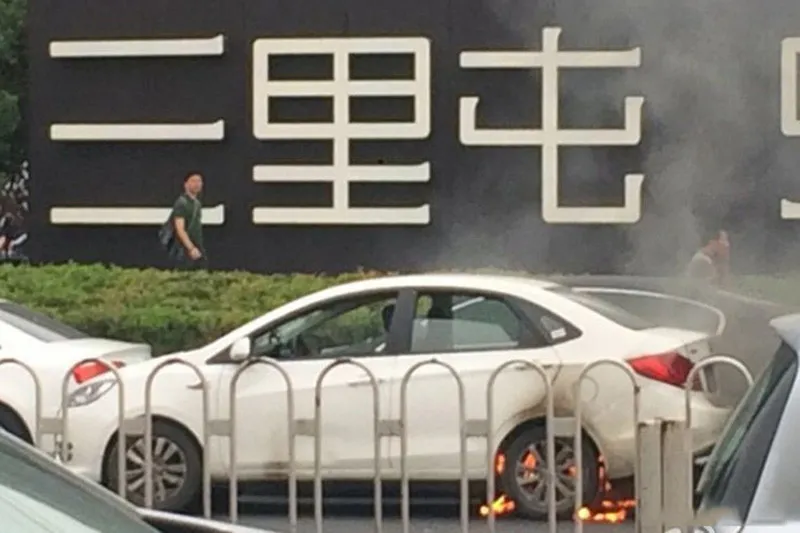
In the past, a certain new energy vehicle brand was punished in Beijing due to several consecutive spontaneous combustion incidents involving the same vehicle model.
Therefore, compared to subsidies that run into the billions or tens of billions, car manufacturers will never risk losing that much. After new energy vehicles catch fire, car manufacturers often compensate owners at lightning speed. According to cases learned by Electric Vehicle Observer, from spontaneous combustion to compensation completion, the fastest occurred within half a day.
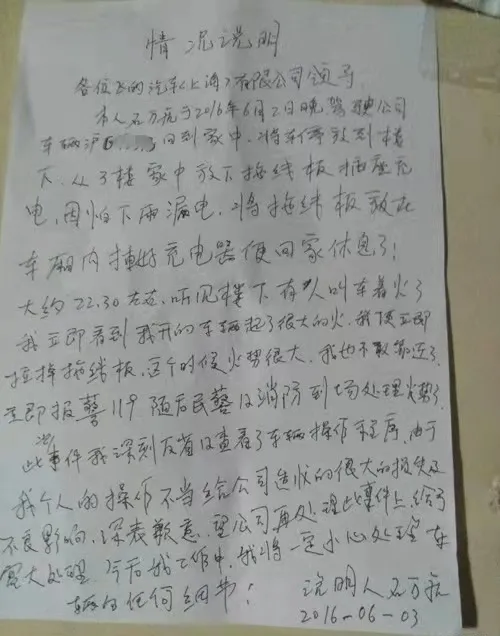 Even if it is not their own responsibility, car companies will still compensate in certain situations. Both Beijing and Shanghai have experienced incidents of new energy vehicle fires caused by “flying lines” during charging. Car companies have made car owners sign an agreement to prove that they fully compensated the car owners, even when the car owner was the one responsible for causing the accident.
Even if it is not their own responsibility, car companies will still compensate in certain situations. Both Beijing and Shanghai have experienced incidents of new energy vehicle fires caused by “flying lines” during charging. Car companies have made car owners sign an agreement to prove that they fully compensated the car owners, even when the car owner was the one responsible for causing the accident.
After the launch of specialized insurance for new energy vehicles, car owners no longer need to resort to noisy behavior or litigations against car companies in order to obtain compensation.
Once the car damage insurance is purchased, the insurance company will provide compensation for the self-ignition accident of the new energy vehicle.
In the future: small insurance, great protection
What happens if the third-party insurance coverage is insufficient to cover the loss caused by a car fire?
Who will compensate for the third-party loss caused by the car owner’s private charging pile?
If the car is scrapped due to the purchase of intelligent driving software, can the cost of the software be compensated?
These questions now have answers in the specialized insurance for new energy vehicles.
The draft of the specialized insurance for new energy vehicles includes multiple additional insurances that cover fire and spontaneous combustion accidents, charging, and intelligent software. These insurance services are designed for special situations of new energy vehicles and can compensate for some accidents with seemingly small potential risks but actually come with a huge risk.
The additional “Fire Accident Limit Doubled Insurance” is an insurance that can prevent huge compensation.
After purchasing the additional “Fire Accident Limit Doubled Insurance” , the third-party liability insurance coverage for new energy vehicle self-ignition can be doubled to 2, 3 or 4 times the original coverage depending on the agreement between the car owner and the insurance company during the purchase.
Take the aforementioned self-ignition incident in a Shanghai underground parking garage as an example. The third-party liability insurance purchased by the car can compensate the third-party loss caused by the car fire.
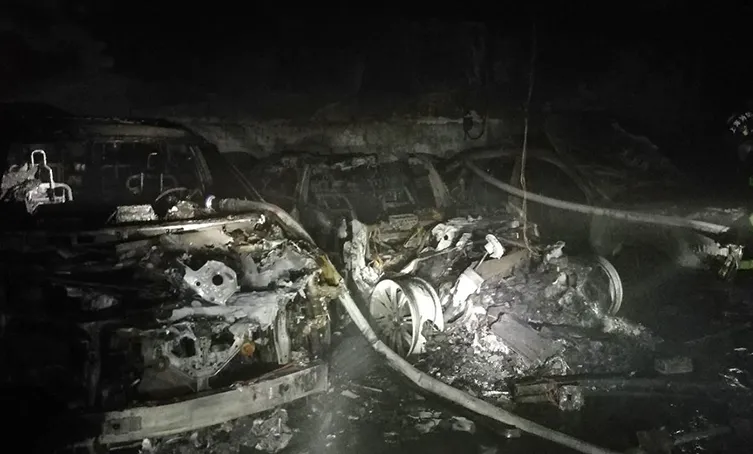
From the perspective of the two luxury cars parked next to the burning car, the direct loss alone has already exceeded one million yuan. If other cars and items in the garage are added together, the loss can be even higher.
Even if the third-party liability insurance coverage of the car is one million, it is still difficult to cover all direct losses.
If the “Fire Accident Limit Doubled Insurance” is added as an additional insurance with four times the original coverage, in the event of a self-ignition accident, the third-party liability insurance coverage can be up to 4 million yuan, which should be enough to compensate for the direct losses caused by the fire.
Similar additional insurances designed for special situations, such as the “Fire Accident Limit Doubled Insurance”, are also available for charging accidents.
Regarding charging, three additional insurances are now available: external power grid fault loss insurance, private charging pile damage insurance, and private charging pile liability insurance.
Among them, the coverage of the external power grid fault loss insurance includes direct losses from insured new energy vehicles caused by external power grid faults during the charging period. For example, if there is a sudden blackout during charging, the losses incurred by the car will be paid by this insurance.# Private Charging Station Loss Insurance
Private charging station loss insurance is designed to compensate for the loss of the charging station caused by natural disasters, accidents, theft, or damage by others. For example, if the charging station is damaged due to lightning strike, this insurance can cover the loss.
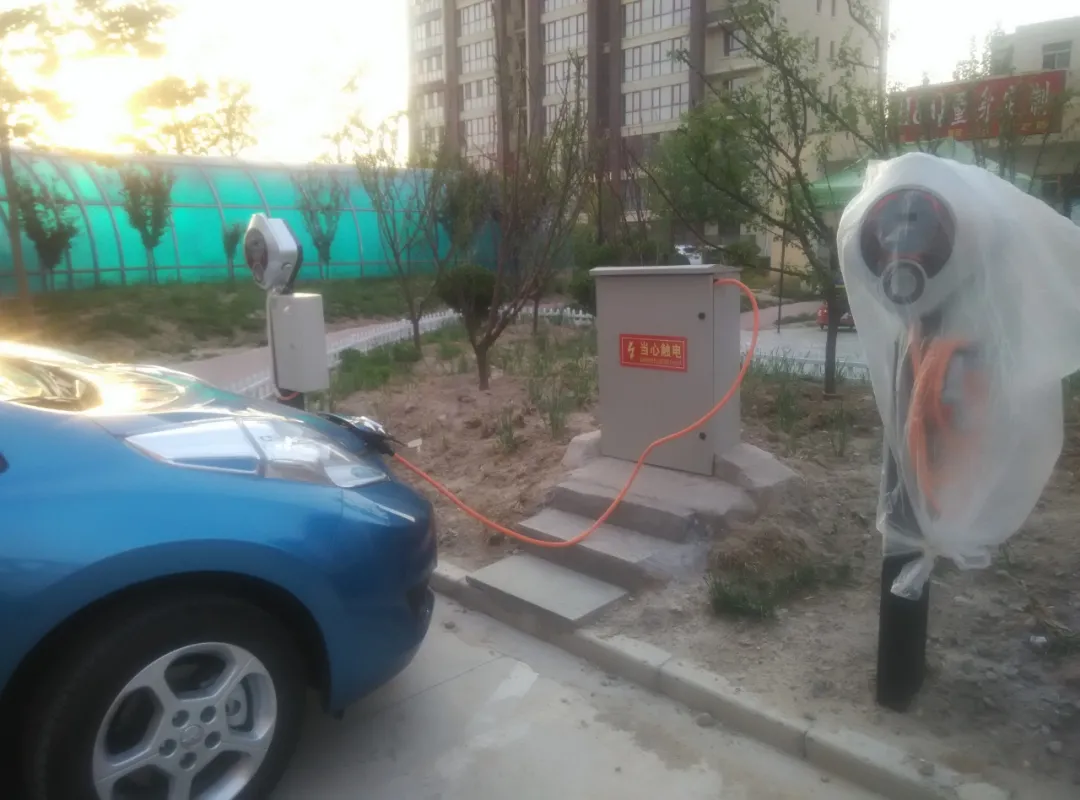
Private Charging Station Liability Insurance
Private charging station liability insurance is designed to compensate for the third-party personal injury or property damage caused by the private charging station. For example, if there is an accidental electric shock due to the charging station leakage, this insurance will pay for the loss.
Adding private charging station loss insurance and private charging station liability insurance is a type of insurance for new energy vehicle owners. It does not require the vehicle to be in a charging status to enjoy insurance services.
In response to the unique intelligent configuration of new energy vehicles, the draft of exclusive insurance clauses for new energy vehicles has introduced an additional intelligent assisted driving software loss compensation insurance.
Intelligent assisted driving software loss compensation insurance can compensate for the cost of purchasing intelligent assisted driving software when it is unable to use due to accidents within the main insurance policy of the vehicle insurance causing the entire loss. For example, Tesla’s FSD software is sold separately. When the vehicle is scrapped due to an accident and the vehicle insurance and additional intelligent assisted driving software loss compensation insurance are applied, the insurance company will pay for the cost of purchasing FSD software according to the insured amount.
The additional insurances designed for private charging stations, insufficient three-risk coverage, and high cost of purchasing intelligent assisted driving software are considered as special cases. Although these additional insurances may look like outliers, they can solve significant problems for vehicle owners in case of an accident.
Will the Insurance Company Be the “Scapegoat”?
According to the draft, insurance companies will cover new energy vehicle spontaneous combustion accidents within the scope of coverage. Even if the spontaneous combustion accident is the result of a product quality defect on the part of a car manufacturer, the insurance company will pay first.
But what if the car manufacturer causes significant accidents due to a quality defect of a specific product?
They will still pay. However, insurance companies have also calculated their expenses to deal with significant compensation cases.
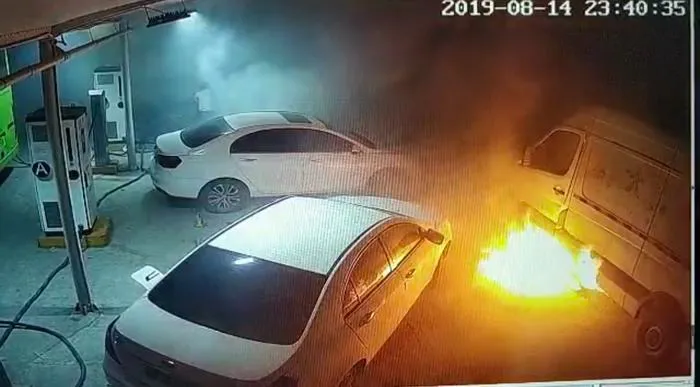
One publicly available data is the probability of new energy vehicle fires. At the 2020 Global Intelligent Travel Conference, Sun Fengchun, academician of the Chinese Academy of Engineering, announced that the probability of new energy vehicle fires was 0.49 in 2019, which dropped to 0.26 by 2020.Based on the current ownership of new energy vehicles of about 6 million, the claim that “new energy vehicles are prone to catching fire” is inaccurate. Based on probability, only around 200 new energy vehicles catch fire each year.
If calculated by the single vehicle claim amount of 200,000 yuan, the total claim amount for 200 vehicles is only 40 million yuan. Relative to the assets scale of several trillions in the insurance industry, 40 million yuan is just like “a drop in the bucket”.
Therefore, if the exclusive clause for new energy vehicle insurance is approved, wealthy insurance companies will bear the main compensation responsibility for new energy vehicle fires, which could make them feel like “a scapegoat”. However, this is also the embodiment of the social responsibility attribute of insurance.
Nevertheless, this does not mean that car manufacturers can shift the blame for product quality issues to insurance companies.
From the standpoint of insurance companies, if the risk of a single car manufacturer or a single car model catching fire increases, insurance companies can raise premiums to reduce risks. If the risk of catching fire is extremely high, insurance companies can even refuse to provide coverage.
If an insurance company refuses to take on the insurance responsibility for a specific car model, then the sales of that car model will certainly be poor.
However, if insurance companies bear the losses of all new energy vehicles catching fire, the cost will be considerable. The willingness of insurance companies to resolutely undertake social responsibilities may be due to political considerations.
At present, the position of new energy vehicles as a national strategic emerging industry is unshakable and even further elevated.
On July 30th, the Political Bureau of the Communist Party of China held a meeting to analyze and study the current economic situation and deploy economic work for the second half of the year. The meeting pointed out that the first specific industry requirement for the national economy mentioned was new energy vehicles. The meeting called for tapping the potential of the domestic market and supporting the accelerated development of new energy vehicles.
In addition, the “carbon peak and carbon neutrality” double-carbon target has become a iron law for all industries, and all related policies and services must support the double-carbon target. If new energy vehicles do not have exclusive insurance, they will obviously become obstacles to the promotion of new energy vehicles and the reduction of transportation carbon emissions. Insurance companies will become a focus of criticism.
Unresolved Issues with New Energy Vehicle Insurance?
New energy vehicle exclusive insurance is beneficial to consumers and car manufacturers, so why is it only being launched now?
From publicly available information, as early as December 2017, the China Insurance Association held a “New Energy Vehicle Insurance Development Exchange Meeting” to initiate professional research on the formulation of exclusive insurance clauses for new energy vehicles, risk pricing, and claims technology.
However, it was not until the summer of 2021, four years later, that the exclusive insurance clauses for new energy vehicles began to enter the stage of soliciting opinions. During this period, new energy vehicle insurance was delayed, resulting in frequent chaotic situations.
One of the chaotic situations is whether the insurance amount includes subsidies. That is, is the insurance amount calculated based on the pre-subsidy vehicle price or the post-subsidy vehicle price, which directly determines the premium and claims amount.In the perception of new energy vehicle owners, the insurance premiums for new energy vehicles are relatively high, and this is precisely the reason for that. However, if insurance companies provide insurance services based on the subsidized price, it may be difficult to cover the cost of repairs in cases involving damage to the power battery.
The second issue is that the amount of compensation is greater than the price of a new car. If insurance is purchased based on the pre-subsidized car price, the insurance company needs to pay according to the amount insured in the event of a total loss accident. In special cases, the insurance compensation may be higher than the actual purchase price of the new car after subsidies.
This kind of special situation may even lead to illegal criminal activities.
The third issue is the difficulty in obtaining insurance coverage and making insurance claims. Due to the special nature of new energy vehicles, some insurance companies may refuse to provide coverage, and there are also cases where insurance companies refuse to cover the power battery but cover the whole vehicle through special agreements. In cases involving self-ignition during charging, as well as damage to the power battery, there are difficulties in making insurance claims.
Nowadays, new energy vehicle exclusive insurance terms are seeking opinions. On the one hand, it is because the chaos in the insurance industry does need to be rectified, and on the other hand, it is a response to the acceleration of the development of new energy vehicles at the Central Economic Work Conference.
From the perspective of time, the new energy vehicle exclusive insurance terms have been investigated in many aspects. After the Central Government proposed to accelerate the development of new energy vehicles, the insurance industry took the lead in responding, which will help accelerate the development of new energy vehicles, and should be commended.
In the draft of the exclusive insurance terms for new energy vehicles, it can be seen that insurance companies take on insurance responsibilities proactively from a social responsibility perspective in terms of car self-ignition, charging, and intelligent driving software.
However, there are still some unclear parts in the draft for soliciting opinions.
For example, for the insurance terms of swappable battery vehicles, it is unclear whether the power battery is within the scope of protection. Whether accidents caused by OTA updates of intelligent electric vehicles are covered is also unclear.
New energy vehicles are not just a change in automotive energy. There are significant changes in car production, manufacturing, and usage methods. Whether the insurance industry can quickly adapt to support the subsequent development of new energy vehicles also needs further observation.
This article is a translation by ChatGPT of a Chinese report from 42HOW. If you have any questions about it, please email bd@42how.com.